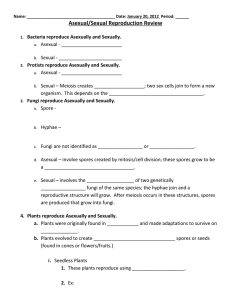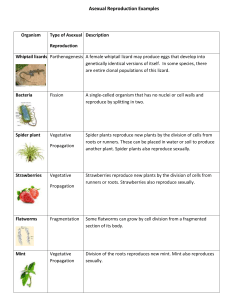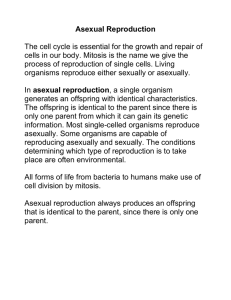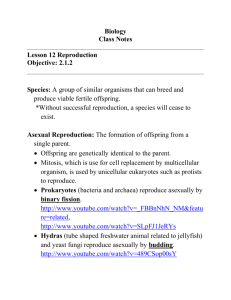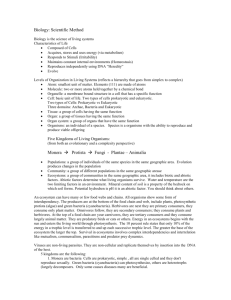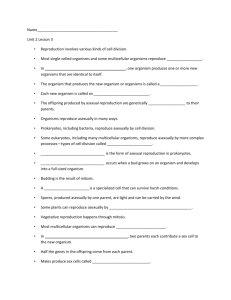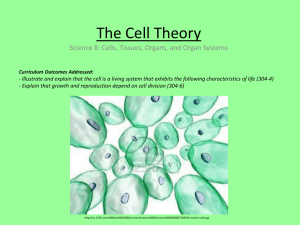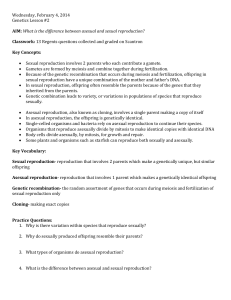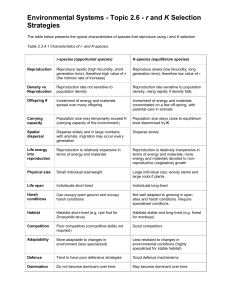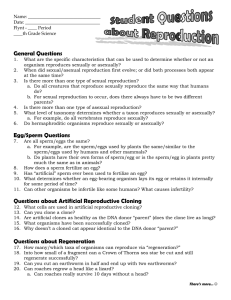Prior to Lesson
advertisement
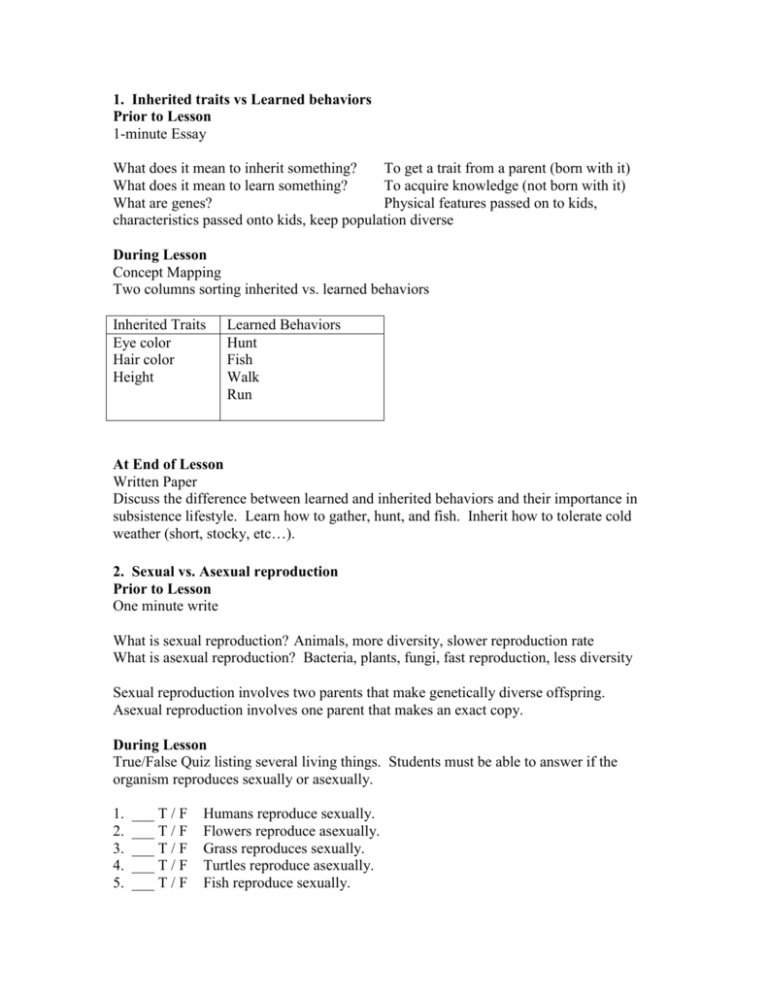
1. Inherited traits vs Learned behaviors Prior to Lesson 1-minute Essay What does it mean to inherit something? To get a trait from a parent (born with it) What does it mean to learn something? To acquire knowledge (not born with it) What are genes? Physical features passed on to kids, characteristics passed onto kids, keep population diverse During Lesson Concept Mapping Two columns sorting inherited vs. learned behaviors Inherited Traits Eye color Hair color Height Learned Behaviors Hunt Fish Walk Run At End of Lesson Written Paper Discuss the difference between learned and inherited behaviors and their importance in subsistence lifestyle. Learn how to gather, hunt, and fish. Inherit how to tolerate cold weather (short, stocky, etc…). 2. Sexual vs. Asexual reproduction Prior to Lesson One minute write What is sexual reproduction? Animals, more diversity, slower reproduction rate What is asexual reproduction? Bacteria, plants, fungi, fast reproduction, less diversity Sexual reproduction involves two parents that make genetically diverse offspring. Asexual reproduction involves one parent that makes an exact copy. During Lesson True/False Quiz listing several living things. Students must be able to answer if the organism reproduces sexually or asexually. 1. 2. 3. 4. 5. ___ T / F ___ T / F ___ T / F ___ T / F ___ T / F Humans reproduce sexually. Flowers reproduce asexually. Grass reproduces sexually. Turtles reproduce asexually. Fish reproduce sexually. 6. ___ T / F 7. ___ T / F 8. ___ T / F 9. ___ T / F 10. ___ T / F Frogs reproduce asexually. Mosquitoes reproduce sexually. Jellyfish reproduce asexually. Starfish reproduce asexually. Spiders reproduce sexually. At End of Lesson Make a poster drawing 5 organisms that reproduce sexually on one side and 5 organisms that reproduce asexually on the other side. Students will give a 1-2 minute presentation on their poster to explain why they put each organism in the appropriate column. 3. Mutations Prior to Lesson Thumb It! (Thumbs up, thumbs down, thumbs out) Do you know what a mutation is? Error in cell division. Can a mutation be good? Bad? Neutral? During Lesson Think/Draw Draw a picture of a helpful mutation. Draw a picture of a harmful mutation. Draw a picture of a neutral mutation. At End of Lesson Classify a group of mutations as harmful, helpful, or neutral A hereditary disease Cancer Resist disease An extra limb 4. Classification of Organisms Prior to Lesson T/F Quiz Test of misconceptions i.e. __ T/F A salmon is a mammal. During Lesson Concept Mapping Five columns placing animals in the correct column (mammal, fish, bird, reptile, amphibian) At End of Lesson Written Paper / Diagram / Poster Describe how the life cycle of a bear depends on the life cycle of a fish. Describe how the life cycle of a bird depends on the cycle of the seasons Describe how the life cycle of a fish depends of the cycle of the seasons. 5. Energy Transfer (food chain, food web, photosynthesis) Prior to Lesson KWL (Know, Want to know, Learned) What does energy transfer mean? During Lesson Concept Mapping Draw a food web from a list of organisms given to each group. Also classify as producer, consumer, and decomposer Draw a diagram describing the process of photosynthesis At End of Lesson Write a paper Pick one organism from your food web. What would happen if that organism were removed from the web? What would happen if there were no decomposers? 6. Organs, Organ systems and their functions Prior to Lesson Thumb It! (Thumbs up, Thumbs down, Thumbs out) Do you know the following terms: Kidney, heart, lungs, stomach, brain, liver, pancreas, intestine, nervous system, muscular system, skeletal system, circulatory system Do you know the function of the following terms: Kidney, heart, lungs, stomach, brain, liver, pancreas, intestine, nervous system, muscular system, skeletal system. During Lesson Presentation Each student takes one of the following organs: Kidney, heart, lungs, stomach, brain, liver, pancreas, intestine. Each student will present his or her organ to the class answering the following questions in a 1 – 2 minute presentation. Where in the body is my organ located? How big is my organ? What is the function of my organ? At End of Lesson Quiz/Test – Describe what organ system each organ belongs to. Also discuss how the circulatory system, respiratory system, and nervous system are cycles. 7. Plant Cells vs. Animal Cells Prior to Lesson 1-minute essay How are a plant cell and an animal cell the same? How are they different? During Lesson Concept Mapping – Animal Cell / Plant Cell List all of the organelles contained in each type of cell Jigsaw – function of each organelle At End of Lesson Students make a poster of a plant and an animal cell. All parts are labeled.

